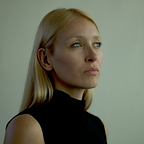The Unlimited Possibilities of Open Content and Open API for Museums
(back from the first edition of the API Culture Day on 28th June 2019 in Lyon, France)
On June 28th, we were at the Museum of Fine Arts of Lyon in France for the first API Culture Day organized by biinlab in collaboration with We Are Museums. During this day of reflection and inspiration around the use of APIs in culture, we tried to understand how the promotion and mediation of heritage are being changed with the opening of museum data and their APIs and with the new uses of machine learning.
During one day, some twenty cultural professionals have been working on this question, informed by the interventions of our three experts: Isabelle Reusa (API Consultant, API Days Curator, ex- Réunion des Musées Nationaux), Philippe Rivière (Head of communication and digital at Paris Musées) and Diane Drubay (founder of We Are Museums).
To start this series of articles about what we shared and learned during our first API Culture Day, here is the review of my presentation:
‘The Unlimited Possibilities of Open Content and Open API for Museums’ — Diane Drubay
As key agent of social change and social innovation, museums provide the verified facts that we all need and can act against the current climate issues we are facing. When we talk about Open Data in museums, we often think about the hard job that it requires starting with the digitisation of the collection that is far away from being an easy task for everyone, then on storing and ordering the data, making them smart and augmented and these are only the first steps. But what I tried to show during this short introduction is how much this is worth it, and even more than what you can imagine!
“We must ask ourselves what is the human, social and ecological potential behind the opening of the collections. Opening your data means transforming lives and, I dare say, saving the planet. »
Open Culture is fundamental to create a sustainable future!
Opening the licence and the uses of digitised cultural content allows the passive database of museums to become active assets. Digitised museum collections are becoming tools to impact lives, communities and societies.
If you follow the Open Definition, ‘Open means that anyone can freely access, use, modify, and share for any purpose.’ Open Culture is a game-changing tool for global accessibility to culture. Being able to open up the collections to as many people as possible not depending on the time, space, money, culture and whatsoever is the best way to fulfil the mission of museums. Organisations like Wikipedia with the Open Glam movement and Europeana are followed by a fast-growing list of museums open-up their collections, putting their content online in high definition, for free private or commercial use. If you want to start opening up your collection, one of the biggest challenges is to clear copyright and related rights and to clearly communicate how images and metadata can be reused.
I think we started to fully understand the potential and possibilities of open content in museums when the Rijksmuseum decided to open its collection online in 2013. This project came along with the financial and promotional support of projects so creatives could turn their ideas into reality and made a private or even preferably a commercial use of it
“Public engagement is completely facilitated by the openness of the data. We have begun to really understand that the public can interact, use and even integrate the contents of a collection into everyday life. »
Artists have been using open data and content by museums to create different types of works and visualisation like the alternative visualization of the Tate collection according to artwork dimensions by Jim Davenport. Opening up the museum’s collection also means providing content to small or bigger companies to create products or services from them. For instance, Artsy is integrating the museum’s artworks into the augmented-reality feature on the Artsy app, allowing users to virtually ‘hang’ two-dimensional artworks to any vertical surface
Opening-up the museum’s collection can speed up international research by providing rich interconnectivity, new forms of collaborations and guarantee transparency.
For instance, Parson’s started a series of data visualisations based on the open API of the MET in order to analyse various social trends. Here, you can see the number of artworks collected by the Met made by male or female. But also, by opening their data, Natural History Museums can collaborate in a local and global way, with pairs or with citizens. For instance, the Natural History Museum of London combines their open database with data from researches around the globe to find and predict patterns of species loss, and reveal what we can do to stop it. Being able to have access to the database from the last centuries could also be really valuable for scientists and environmentalists in their combat against climate change. A few months ago, this great website Watercolour World showed pictures from landscapes before photography existed.
From physical to digital to physical, open culture allows content to have their own journey through people, space and time and become tools for social innovations.
Open Culture can turn the temporary walls of our cities as doors for new stories or reflections, like what the OPEN SMK project gave to the city of Copenhagen. And Art can also be used as a conversation starter about physical or mental vulnerability, democratic actions and more. This is an example from the Taboo Workshop organised with the collection of the SMK last September in Copenhagen for the Young People’s Meeting (see the slides from Merete Sanderhoff).
And all this is possible thanks to the creative commons public domain means that you can use the material for any purpose without any limits. It enables Wikipedia, researches or students to have high quality certified content.
Next article: ‘Museums and APIs: A story to write’ by Isabelle Reusa
